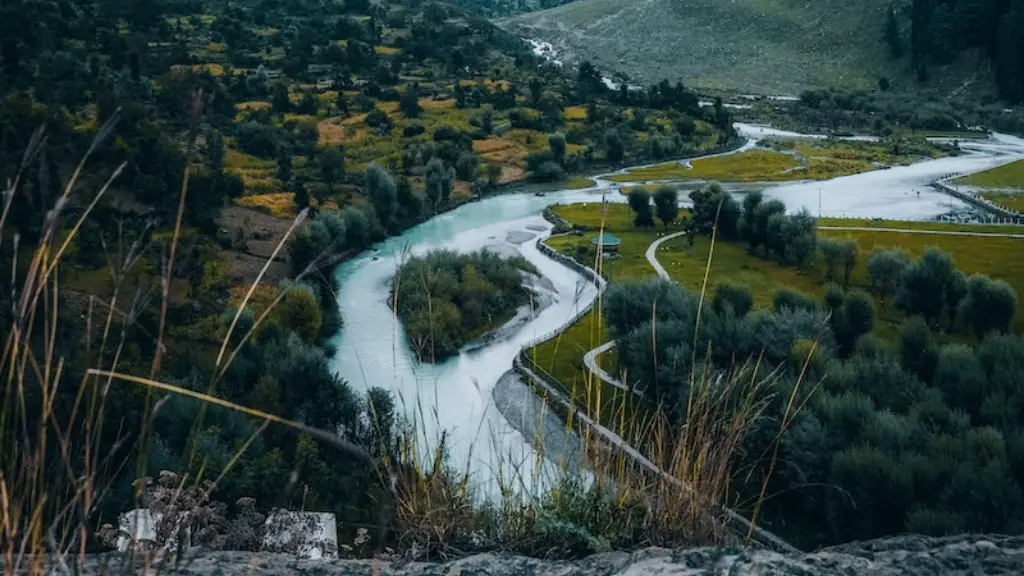Introduction
The Mississippi River is the second longest river in North America, and is a key feature of the United States of America. Mississippi is derived from an Algonquian-language term Mizu Sipi, which translated in English translates to “great river”. It is a source of sustenance and life, not only to those living in its basin, but also to many important species of wild birds and plants which call the Mississippi River home. It is estimated that the river is around 2, 340 miles (3, 760 kilometers) long. It is estimated that the river is around 2, 340 miles (3, 760 kilometers) and stretches from northern Minnesota to the Gulf of Mexico. In its course, it creates the border between numerous states, including Minnesota to the north, Mississippi and Louisiana to the south.
History
The Mississippi River has been around for centuries, serving as a vital source of water for the Native American people who lived in the region. It was originally named the “Mizi Sibi” which means “great river”, and was the name used by the Ojibwe Native Americans who lived in the region. When the first Europeans arrived, they corrupted the name to “Mississippi”, which we now know it by. The river was later explored by the French, and the name was eventually adopted by the US government as the official name of the river in 1808.
Geography
As mentioned previously, the Mississippi River is around 2,340 miles (3,760 kilometers) long and stretches from northern Minnesota, down the middle of the United States, all the way to the Gulf of Mexico, forming the border between several states. The source of the river begins at Lake Itasca, located in Clearwater County, Minnesota. The river flows over five different states; Minnesota, Wisconsin, Iowa, Illinois, Missouri, Mississippi and finally into Louisiana, where it empties into the Gulf of Mexico. The river is extremely important to the ecology of the United States, providing homes for thousands of species of plants and animals, as well as providing recreation opportunities for many humans.
Economy
The Mississippi River is an important resource for the economy of the US. The river is used for transportation and for irrigation for farming. It is also a key resource for the energy industry, providing hydroelectricity for many areas. The river is also home to a variety of industries, such as logging, shipping, oil and gas extraction, and recreational activities. It is estimated that approximately 25 million people live within the watershed of the Mississippi River, and the economic contribution of the river is estimated to be around $400 billion yearly.
Environmental Impact
The Mississippi River is a very important resource for the ecology of the United States, providing homes for thousands of species of plants and animals, as well as providing recreation opportunities for many humans. However, the river has also been subject to numerous human interventions throughout its history, which have had an impact on its health. Some of these include the building of dams and levees, which has reduced the amount of flooding and sedimentation in some areas, but has also caused problems such as loss of habitat for species who rely on flooding. As well as this, the river has suffered from water pollution from agricultural and industrial practices, which has affected the health of the river.
Environmental Conservation
Conservation efforts for the Mississippi River have been ongoing for many years. There are several initiatives which are in place, such as the Wetlands Conservation Program, which seeks to protect the wetlands of the river, as well as the Clean Water Act, which seeks to reduce the amount of water pollution in the river. In addition to this, riverbanks have been protected and areas of water designated as “wild and scenic rivers,” which seek to protect the natural environment of the Mississippi River. All of these efforts have helped to ensure that the health of the Mississippi River is maintained.
Conclusion
The Mississippi River is an important resource for the US in terms of economy, ecology, and recreation. It was named after the Ojibwe term “Mizi Sibi”, which means “great river” and is estimated to be around 2,340 miles (3,760 kilometers) long. The river has faced numerous human interventions throughout history, which have had both positive and negative effects on the health of the river. However, thanks to ongoing conservation efforts, the health of the Mississippi River is being maintained and conserved.

